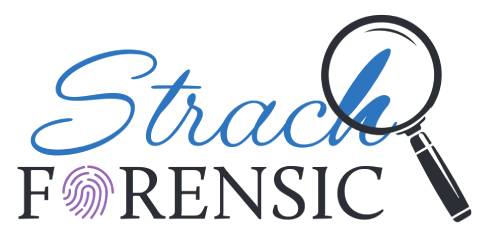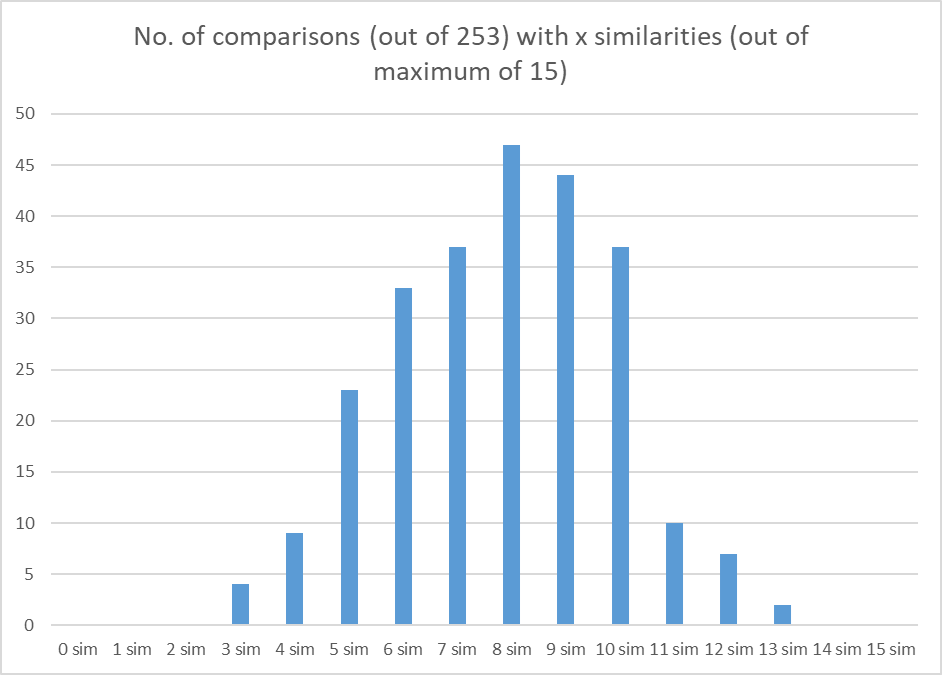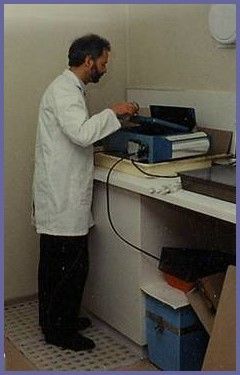Conclusion Scale used in Forensic Document Examination
This is a subtitle for your new post

In forensic science, results of analyses are often expressed in terms of standard wording in a scale of conclusions. For some branches of forensic science (such as DNA analysis) there is statistical data available allowing a quantitative conclusion and results may or may not additionally be expressed qualitatively.
In forensic document examination and handwriting/signature analysis, statistical information is generally not available and it is important that the examiner’s qualitative opinion be expressed as clearly as possible using a scale of conclusions.
Conclusions on the results of handwriting/signature examinations undertaken at Strach Forensic take the following form (here expressed for signature examinations with a positive conclusion).
“There is {qualifier} support for the proposition that the questioned signature was written by the writer of the specimen signatures rather than for the alternative proposition that the questioned signature was not written by this person.”
Levels 1 to 4 have the following {qualifier} descriptions:
1. extremely strong;
2. strong;
3. moderate; and
4. limited.
For negative conclusions, the wording is changed round to read:
“There is {qualifier} support for the proposition that the questioned signature was not written by the writer of the specimen signatures rather than for the alternative proposition that the questioned signature was written by this person.”
With levels 9 to 6 having similar {qualifier} descriptions (in the negative sense):
9. extremely strong;
8. strong;
7. moderate; and
6. limited.
Where an examination was undertaken but none of these positive or negative conclusions could be reached (e.g. in a signature comparison case where a combination of similarities and differences was found or there were too few comparable components in the signatures), the result is described as “inconclusive” (level 5) with explanatory wording:
“That is, I cannot distinguish between the qualitative levels of support for the propositions that the questioned signature was or was not written by the writer of the specimens”.
The scale of conclusions is always provided in the report so that the conclusion(s) reached in that report can be seen in the context of that scale.
The conclusion levels have their origins in those branches of forensic science for which statistical information is available and relate to the general magnitude of the likelihood ratio (LR). This comes from a Bayesian statistical analysis of the data, the details of which will not be discussed here. However, it is useful to describe the LR and how it may be assessed qualitatively (without statistical data). The LR can be thought of as a scale (either numerical or verbal) which can support one proposition over another (the alternative) proposition. For example, if proposition A is “the questioned writing was produced by the writer of the specimens” then the alternative proposition B is “the questioned writing was not produced by the writer of the specimens” and the LR derives from the ratio of the probability of finding such evidence as has been observed given proposition A to the probability of finding such evidence as has been observed given proposition B. Such probabilities can either be statistically determined (as a numerical value between 0 and 1 or in percentage terms between 0 and 100%) or qualitatively assessed. In handwriting and signature comparison cases, such probabilities are typically qualitatively assessed. It is useful to have an idea of the numerical value that the LR might have if the statistical data were available for the various conclusion levels. Thus a level 1 positive conclusion is associated with LR values of the order of 106 (i.e. 1,000,000) or greater, level 2 with LR values of the order of 104 to 105, level 3 with LR values of the order of 102 to 103, and level 4 with LR values of the order of 10. For negative conclusions at levels 9 to 6, the LRs would be the inverse of those indicated for the positive conclusions at levels 1 to 4, respectively. For inconclusive results, the LR would be of order of (i.e. about) 1. These are not hard and fast numbers to be rigidly adhered to but orders of magnitude indicators of the expected ranges of LRs.
The forensic document examiner qualitatively assesses the probabilities (i.e. likelihood) that such (a type of) evidence as has been observed would occur given the one proposition (e.g. “written by”) and would occur given the alternative proposition (e.g. ”not written by”). Each qualitative probability must be the result of combining all plausible contributions from each sub-proposition within each main proposition. For example, within the “written by” (the writer of the specimens) main proposition may be the sub-propositions written by in normal writing style; written by in a disguised style; written by whilst affected by adverse writing conditions or by the effects of drugs/alcohol/medication; written by in an alternative writing style. The ratio of the probability of the observations in the main proposition to that in the alternative proposition gives the likelihood ratio all of which can be thought of qualitatively or estimated quantitatively.
The importance of this process is that all realistic explanations for the observations in both of the competing propositions are considered and assessed so that a reasoned conclusion (essentially on the assessed strength of the evidence) can be arrived at after starting at a neutral viewpoint. Reasons for the conclusion reached are expressed in the report and if required upon testifying in court.
This approach to reaching conclusions is described as the logical approach or evaluative method. The particular scale used by Strach Forensic closely parallels that used by the European Network of Forensic Handwriting Examiners (ENFHEX) (https://enfsi.eu/about-enfsi/structure/working-groups/handwriting/) .
The main other scale of conclusions is that mostly used in North America (known as the SWGDOC [Scientific Working Group on Forensic Document Examination] scale (https://swgdoc.org/ )). This is a nine point scale, with for example the strongest level 1 conclusion being worded along the lines of “Document A was written by the writer of the specimens” and level 2 “there is a strong (or high) probability that document A was written by the writer of the specimens”. From the perspective of the logical or evaluative approach to reaching conclusions, such expressions of conclusions on the probability that the document was written by a particular person are not ultimately justifiable as they would require an assumption of the prior probability which in most cases cannot be made. The prior probability is the probability that document A was written by the writer of the specimens before considering the handwriting evidence. This prior probability might be estimated from the population of possible writers but this would be a major assumption.


